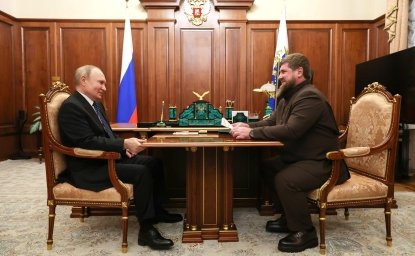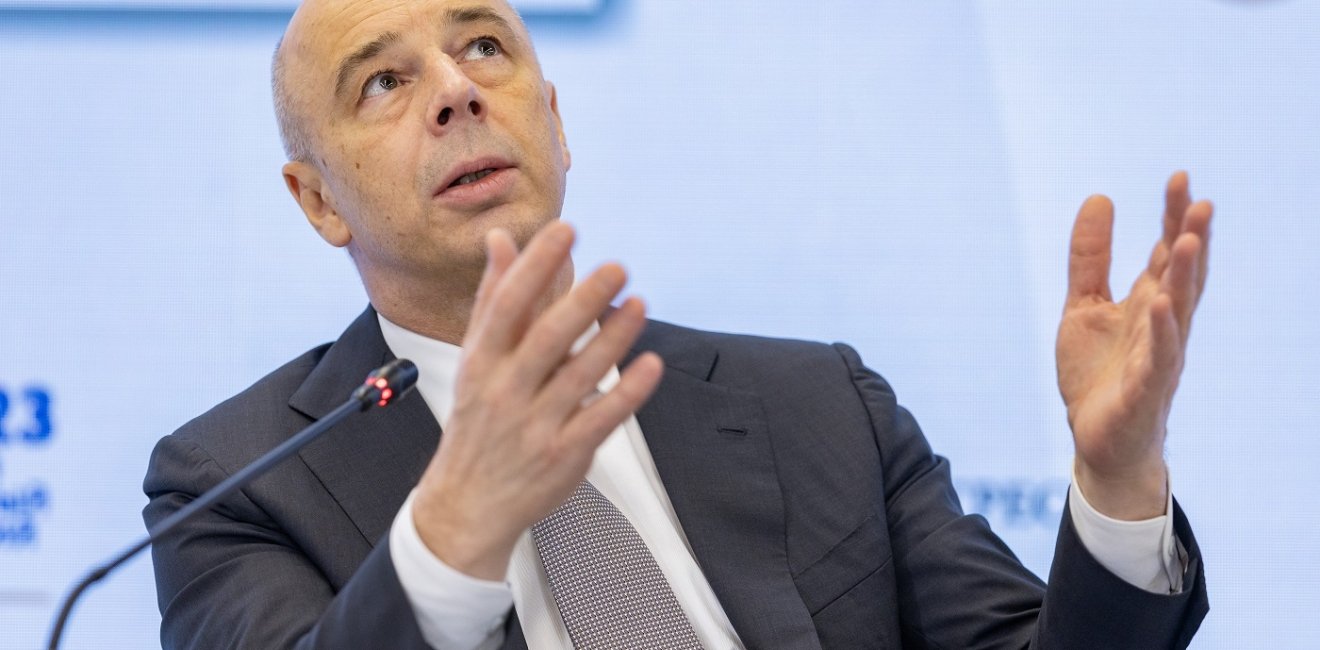
A blog of the Kennan Institute
It is much easier for authoritarian countries to wage war than for democracies. Having failed to “freeze Europe” in the winter of 2022–2023 by switching off the gas supply, Vladimir Putin is once again hoping that time is on his side. In the United States and much of Europe, willingness to support Ukraine in its confrontation with Russia is waning. Voters are unhappy with rising aid spending on Ukraine and rising inflation. A slowing economy could bring to power politicians who are determined to negotiate with Putin rather than fight. This is exactly what Putin is hoping for.
The Advantages of Autocracy
Putin faces no such constraints in Russia. For 2022–2023, he has implemented a powerful budgetary maneuver by increasing military spending at the expense of civilian spending. In a democratic country, voters would have noticed this redistribution of spending and expressed their attitude toward the politicians who carried it out. This is impossible in Russia. A threefold increase in military spending cannot lead to a change of government there: elections mean nothing, and protests are severely punished.
The increase in war spending has not yet led to a fiscal imbalance or an economic downturn. However, the increase in budgetary spending, combined with a decline in export revenues, has led to a depreciation of the ruble and rising inflation. This has become the Kremlin’s main economic problem in recent months. Inflation is reducing real incomes and forcing the government to increase social payments, especially ahead of the 2024 elections.
The ruble’s depreciation has forced the economic authorities to force exporters to sell foreign currency earnings and to raise the key interest rate sharply. These steps will lead to a freeze in lending and a slowdown in economic activity. Moreover, this puts in doubt the fulfillment of the Napoleonic plan of budget revenue growth in 2024 (+22 percent compared to 2023).
Reconciling budget revenues and expenditures in 2024 will be difficult. There are also new challenges: inflation is becoming more visible to the population, while higher borrowing costs and tax hikes are causing discontent in industry. However, the central bank cannot avoid raising interest rates: budgetary spending is fueling inflation, which the central bank can fight only by reducing credit growth.
It is somewhat relieving to learn there is no big increase in military spending budgeted in 2024. Nevertheless, this pause is there only because growth in military spending exceeded all reasonable limits in 2022–2023, when spending on the war reached about 10 percent of GDP.
Military Spending: Update
At the end of October, the Ministry of Finance increased its estimate of budget expenditures in 2023 to 32.5 trillion rubles. This is 0.8 trillion rubles more than the amount envisaged in the 2024 budget bill, which is now being passed by the State Duma. 9.7 trillion rubles, or almost 30 percent of budget expenditures, is expected to be spent on the army this year.
To estimate the total federal budget expenditures on the war, it is necessary to add to this amount the classified expenditures of other agencies. The main motive for classifying expenditures is their connection with defense and security. Taking into account such expenditures, the total amount of spending on the war will be about 13.4 trillion rubles, or 41 percent of budget expenditures. Since the estimate of total budgetary spending has increased slightly, military spending in 2023, if its share remains unchanged, may rise to 13.6–13.7 trillion rubles, or $150–$160 billion. This is three times more than Russia spent on defense in 2019–2021 ($44–$49 billion). For this year, military spending will increase by about 60 percent.
Such an increase in spending could have thrown the budget out of balance. However, this did not happen thanks to the budgetary maneuver: the entire increase in budget spending compared to the prewar period of 2019–2021 (about 10 trillion) was allocated to military purposes, while the amount of spending on civilian purposes remained the same in nominal terms. At the same time, social spending (on pensions and allowances) was increased, while other spending (on education, health care, infrastructure) was significantly reduced. In effect, Putin is financing the war by taking money from the future.
This is really the end of the budgetary maneuver. After the insane growth in military spending in 2022–2023, it is not expected to continue to grow further at the same rate. In 2024, according to the budget, spending on the army will grow to 10.8 trillion rubles, and together with the secret spending of other agencies, military spending will reach 14.7 trillion rubles, which is about 10 percent more than this year’s level.
However, the law on the 2024 budget makes it clear: Russia is quite capable of sustaining a threefold increase in military spending. This is not a short-term fluctuation to finance a short military campaign but a new norm. Autocratic Russia can afford to spend 40 percent of its budget on the military, compared to the prewar 14–16 percent. This is the challenge Putin has issued to Europe and the United States, and it is clearly making an impression. The number of supporters of unconditionally helping Ukraine is gradually dwindling, and more and more Western politicians are beginning to doubt that their countries can afford a new arms race.
However, the budgetary maneuvers and restrictions on Russian exports have thrown macroeconomic indicators off balance. Since the beginning of the year, the ruble-dollar exchange rate has fallen by about a third. The fall would have been even greater had the government not introduced a compulsory sale of 80 percent of exporters' foreign currency earnings.
Inflation and the Fight against It
A more serious economic challenge has been inflation, which has accelerated since July 2023. Prices rose by 6 percent in the twelve months to September, and the central bank expects inflation to reach 7–7.5 percent in the coming months. Real consumer inflation is much higher. According to the sociological service Romir, the average check (the amount paid for a single trip to a shop) was 17.6 percent higher at the end of October than a year earlier.
Russia is already experiencing its second spike in inflation in the war with Ukraine. The first, more significant spike was in the spring of 2022. Inflation is hitting Russians in their pockets. This can be seen, for example, in the free money index calculated by Romir. This index calculates the share of household earnings left over after buying food and everyday goods and paying for housing, utilities, transport, and other necessary services. On average, household disposable income is set to reach one-third of income in 2019, falling to 30 percent of2021 income, 26 percent of 2022 income, and 22-23 percent of 2023 income.
Rising inflation has forced the central bank to raise the key interest rate from 13 percent to 15 percent. From July 2023, the rate has been raised by 550 basis points, and may be raised by a further 150 basis points. This is the central bank's way of trying to slow the growth of inflationary credit. The budget deficit and the lack of workers in the labor market as a result of army recruitment, which is forcing companies to raise wages, are also contributing to inflation.
In recent years, consumption has largely been fueled by credit growth. Moreover, in the autumn of 2023, banks increased retail lending at a record pace. More expensive credit will be another way of paying for the war by reducing consumption, increasing the burden on businesses, and reducing private investment. To be sure, this trend will be mitigated by the expected indexation of payments to pensioners and state employees at the beginning of 2024.
The economic losses from the fight against inflation are very unevenly distributed across the economy. The winners are army suppliers: they are first in line to receive budgetary payments. The losers are exporters (because of the growing tax burden and the rising price of credit), domestically oriented production (because of the rising cost of credit and reduced consumer demand), and, above all, private consumers.
The main reason for rising inflation is loose fiscal policy. The budget deficit is a major contributor to money growth, and the central bank needs to slow down lending to keep inflation from getting out of control. The central bank's fight against inflation will, in its sober assessment, reduce GDP growth to 0.5–1.5 percent in 2024 and reduce private consumption by 1–2 percent. The reduction in household consumption is literally financing the increase in military spending.
A combination of tight monetary and loose credit policies may fail to reduce inflation, but a high interest rate will push all sectors of the economy except defense into recession. Stagflation in the civilian sectors and continued growth in military production will be a natural outcome of current Russian economic policy.
The opinions expressed in this article are those solely of the author and do not reflect the views of the Kennan Institute.
Author

Journalist and public educator; author of Telegram channel EventsAndTexts

Kennan Institute
The Kennan Institute is the premier US center for advanced research on Eurasia and the oldest and largest regional program at the Woodrow Wilson International Center for Scholars. The Kennan Institute is committed to improving American understanding of Russia, Ukraine, Central Asia, the South Caucasus, and the surrounding region through research and exchange. Read more

Explore More in The Russia File
Browse The Russia File
Chechnya as a Model of Modern Russia

Russia’s Indigenous Communities and the War in Ukraine

Gas and Power in a Changing US–Russia Relationship

